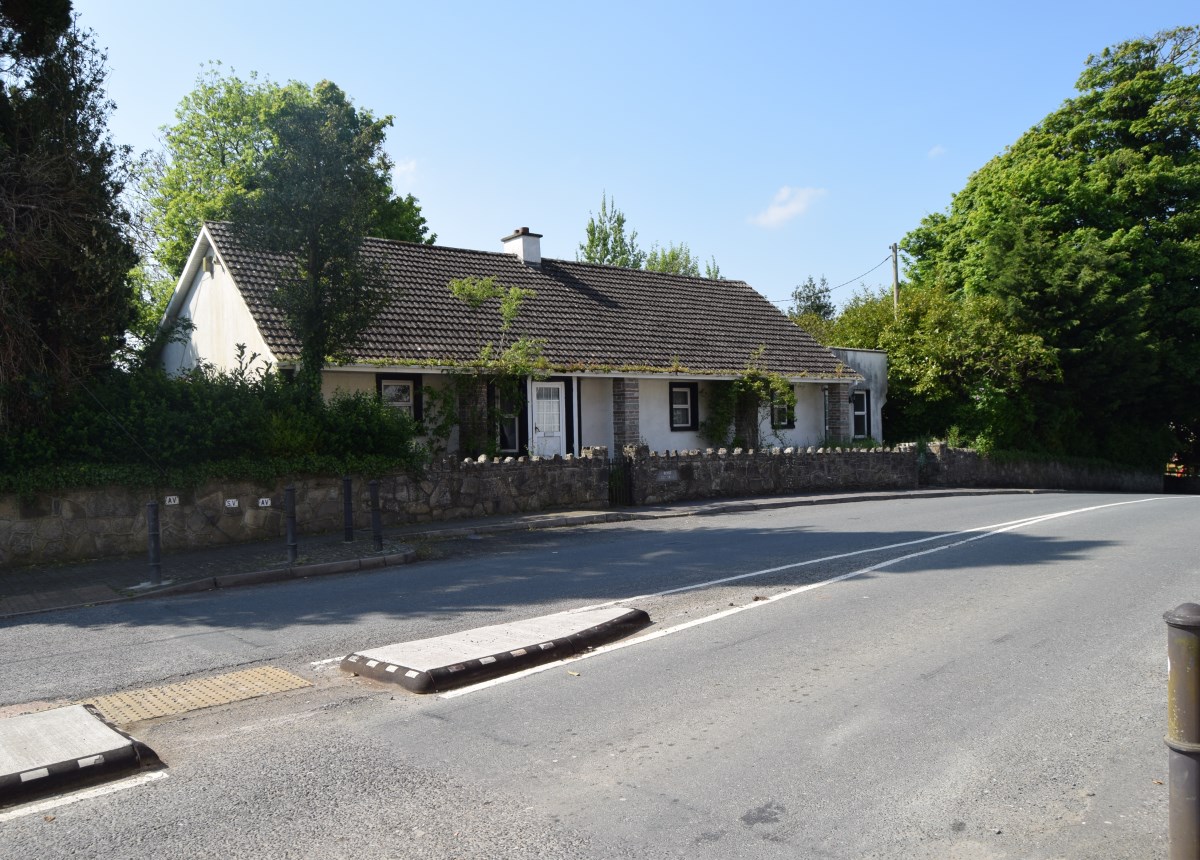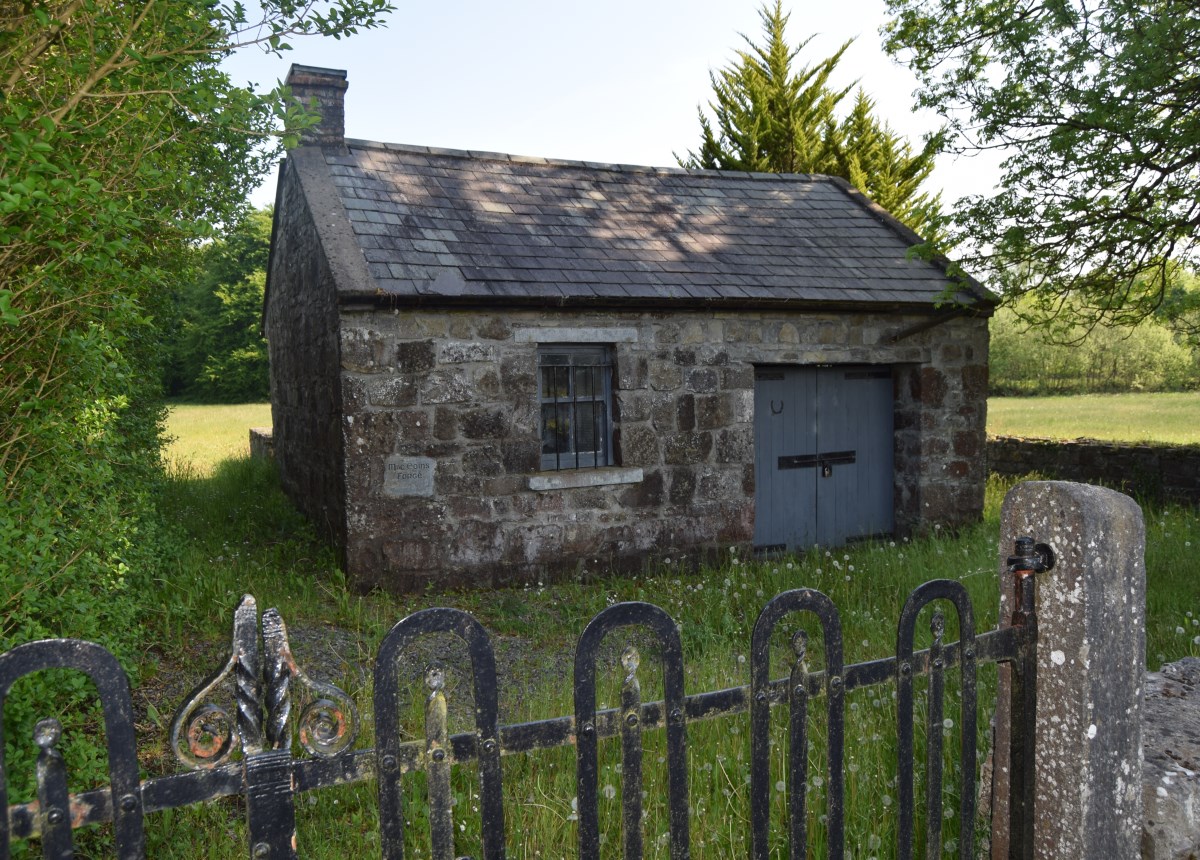Ballinalee

The village of Ballinalee is situated on the Camlin River, midway between Longford and Granard on the R194 in the Parish of Clonbroney. The name is derived from the Irish, "Béal Átha na Laogh" - the mouth of the ford of the calves. Ballinalee was formerly called St Johnstown. St Johnstown was owned by Lord Granard. It was a plantation town, consisting of a borough and township and returned two members of parliament. The Parish of Clonbroney is situated approx 13 kilometres NE of Longford town. The parish consists of 13,200 acres and is bordered by the following parishes: Killoe, Edgeworthtown, Granard, Colmcille and Ballynamuck. There are 56 Townlands, some with very unusual names - France, Cavan and Leitrim. There are several churches namely St James Clonbroney, Holy Trinity Ballinalee, St Johns Church of Ireland Ballinalee. The name of the National School is Scoil Samhthann and is situated on the Granard Road.
History of Ballinalee
Ballinalee was formerly called St Johnstown and was owned by Lord Granard. It was a plantation town, consisting of a borough and township, and returned two members of parliament. Through the ages the parish played its part in Irish history. Many people will be familiar with the story of General Sean Mc Eoin, the blacksmith of Ballinalee. The forge where he used to ply his trade, has been restored and a park is being developed around it. Ballinalee is steeped in history as far back as St. Patrick, who allegedly set up the first convent in clonbroney. The history of Christianity in the parish dates to the time of St Patrick. St Patrick himself appointed his foster brother Guasacht as Bishop of Granard and together with the two St Emers, his foster sisters, founded the first convent in Ireland in an area presently known as Old Clonbroney. After the Battle of Ballinamuck, the victorious English forces under Lord Cornwallis spent some time in Ballinalee. During this time over 100 insurgent prisoners were executed here and buried in a graveyard now known as Bullys Acre.

Rose Cottage in Ballinalee - this was the headquarters of Gen Seán MacEoin and the north Longford flying column during the "Battle of Ballinalee"
Ballinalee has gained prominence in this century as the birthplace of General Seán Mac Eoin, the legendary Blacksmith of Ballinalee. General MacEoin was a leader of the National Volunteers; North Longford Column. Seán MacEoin led a number of successful actions, principally the Battle of Ballinalee and the Clonfin Ambush Seán MacEoin went on to have a long and distinguished political career. Ballinalee, will be forever associated with General Sean MacEoin, the Blacksmith of Ballinalee. Commander of the North Longford Flying Column of the IRA, MacEoin was to emerge as one of the heroes of the War of Independence. The forge where he used to work in more tranquil times can still be seen. After independence MacEoin enjoyed a long and successful political career, being a Dail deputy between 1929 and 1965 and holding the offices of Minister of Justice (1948-51) and Defence (1954-57). However, he was twice narrowly defeated for President, in 1945 by Sean T. OKelly and again in 1959 by Eamon De Valera. Further back in time Ballinalee was central to the tragedy of 1798. Following the defeat of the Irish and French forces at Ballinamuck, hundreds of prisoners were summarily executed here. The old graveyard where the bodies are buried is still referred to as Bullys Acre.
Things to do & see in Ballinalee
Gurteen Lake
Gurteen Lake is a small lake just outside the village of Ballinalee. It is situated in the townlands of Gurteen and Gurteenrevagh. Gurteen is a ‘bog lake’ and home to such fowl as snipe and swan. The lake is very popular with local fishing enthusiasts and provides a variety of coarse fish including pike and perch. The antlers and bones of red deer are often recovered from the lake. These artefacts are usually quite sound, having been preserved by the antiseptic properties of the bog water. The waters from Gurteen Lake have no visible outlet. The surplus waters of the lake discharge by means of a natural sewer, into the River Camlin as it flows through the village. This ‘natural sewer’ is composed of cavernous passages in the limestone rock, which underlies the village. The Seán Connolly GFC grounds overlook the lake.

MacEoin's Forge
Sean MacEoin’s Forge is situated in the townland of Cloncoose, near Ballinalee village, is the restored forge of Seán MacEoin. Beside the forge you will see the outline of the MacEoin family home. Both were burned by the Black and Tans (British forces) in late 1920, during the War of Independence. General MacEoin’s forge is beside the Ballinalee to Granard Road, R198, and the site is accessible via a gateway. The interior of the forge is not ordinarily accessible.
Ballinalee Conemara Pony Show
The Ballinalee Connemara Pony Show is an annual event consisting of The Connemara Pony Show, plenty of family fun and entertainment and a dog show. The show takes place annually on the second Sunday in June. The show is an all registered Connemara pony show with in-hand and performance classes held. This is a unique and social event in a rural village promoting the native Connemara Pony and is the second largest show of its type in the country.
Camlin River
"Where down in sleepy vales and moors, the Camlin waters flow”. For 50 kilometres from where it rises near Granard to where its two branch distributaries enter the Shannon, the Camlin (Cam Líne, Crooked Line) is a natural boundary between north and south Longford. The Camlin enters the parish of Clonbroney from Clonfin Lough and meanders across the parish from east to west, a distance of 16 kilometres. The Camlin is fed by the pocket river and numerous fast flowing streams from Corn Hill. The path of the Camlin River is clearly visible as a silvery line from the higher ground of the hill. Many underground passages in the limestone rock are thought to exist along the course of the river, such as the channel linking Gurteen Lake and the Camlin, and those located in ‘Fine Meadows’ in Esker. Fishing in the Camlin is excellent. The river is easily accessible with fish such as pike, trout, bream and roach, swimming its water.
Corbeagh Lake
Corbeagh Lake is a small lake in a secluded setting, located approximately 5 kilometres outside the village of Ballinalee. The lake is situated in the townland of Corbeagh or Cor Beith in Irish, which translates as ‘Round hill of the birch trees’. Corbeagh Lake also borders on the townlands of Drumeel and Currygrane. Corbeagh Lake could be described as “off the beaten track” and is a very tranquil and peaceful place. The lake has a very picturesque setting, it is surrounded by green fields and some small woodlands of mainly larch and birch trees.
A smaller lough is joined to the main body of the lake by a narrow neck of water, this small lough is known as ‘Farrelley’s Lough’. Corbeagh Lake formed part of the estate of James Wilson, a JP and High Sheriff of Co Longford. A windmill was situated near the lake which pumped water to the plantation fields of this estate. Corbeagh contains two small islands of artificial formation known as crannogs. These small islands are known as ‘Round Island’ and ‘Fry Island’. Despite its seclusion Corbeagh Lake is very popular with fishermen. Coarse fishing competitions are held on the lake, and the fishing competitions are held on the lake, and the fish found there include pike, perch and some eel.



